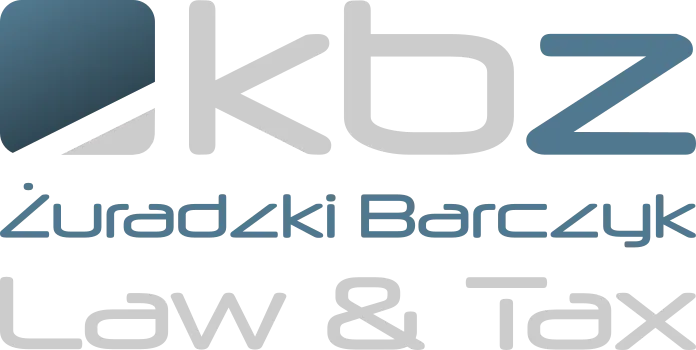Legal Advice for Business
- Intellectual property law
- GDPR: personal data
- Labour/employment law
- Artificial intelligence in companies and AI compliance
- Construction law and real property
- Pharmaceutical law
- Legal audits / due diligence examinations
- Foreign nationals
- Estonian CIT
- M&A Mergers, acquisitions, transformations of companies
Introduction
„Estonian CIT” is a popular term for new rules (in force since 2021) regards taxation of the companies, which are focused on development and investing rather than short-term profit.
Estonian CIT is mistakenly introduced as “lack of income tax” as long as the company uses its capital on development instead of profit. Dedicated regulations in that matter, sadly apply only to the Estonian companies, while Polish regulations adds a number of conditions within term of “hidden profit” at the top, which in practice causes taxation within income tax, regardless of the investments level.
Nevertheless, for some entities divided remuneration under the Estonian CIT rules might be more profitable than general regulations.
CIT rates
| General Rules | Estonian CIT | |
|---|---|---|
| "Small entities" | 9% | 10% |
| Other entities | 19% | 20% |
Table no. 1 – tax rate comparison
The CIT rate stands at respectively 9% for so-called “small entities” and 19% for the other entities [Article 19 (1) of the CIT Act]. With simplification, small entities are companies which did not reach income (from sale) equal to the 2 million EUR, during the fiscal year [Article 4a point 10 of the CIT Act].
The Estonian CIT rate equals to 10% rate for small entities and 20% rate for other entities [Article 28o of the CIT Act].
Dividend rates
| General rules | Estonian CIT | |
|---|---|---|
| “Small entities” | 19% | 10%(with 90% CIT deduction) |
| Other entities | 19% | 5%(with 70% CIT deduction) |
Table no. 2 – PIT and CIT on dividend comparison
The special Estonian CIT rules may seem interesting within the scope of paying out the dividend.
Regulations updated in 2022, allows to credit towards income tax already paid by the company, from the dividend tax for shareholder, as long as indicated company settles its income under the Estonian CIT regime [Article 30a (10) of the PIT Act].
Dividend taxation for „small entities” comparison
| “Small entities” | “Small entities” EC* | |
|---|---|---|
| net income | 1.500.000 PLN | 1.500.000 PLN |
| CIT / CIT EC | 135.000 PLN | 150.000 PLN |
| dividend amount | 1.365.000 PLN | 1.500.000 PLN |
| PIT / PIT EC | 259.350 PLN | 150.000 PLN |
| effective tax rate | 26,29% | 20,00% |
*EC – Estonian CIT
Table no. 3 – dividend taxation for „small entities” comparison”
Dividend taxation rules for other entities comparison
| Other entities | Other entities EC* | |
|---|---|---|
| net income | 2.000.000 PLN | 2.000.000 PLN |
| Dividend amount | 1.620.000 PLN | 2.000.000 PLN |
| CIT / EC CIT | 380.000 PLN | 400.000 PLN |
| PIT / EC PIT | 307.800 PLN | 100.000 PLN |
| Effective tax rate | 34,39% | 25% |
*EC – Estonian CIT
Table no. 4 – dividend taxation for other entities comparison
Additional notes
As addressed in the introduction, the truly Estonian CIT was adopted in Tallin. Polish regulations in that matter, requires lot of detailed conditions, that must be met in order to settle taxes wit “Estonian CIT” rules.
Those are mainly:
- company does not have any shares (nor similar rights) in other companies,
- the shareholders are only natural persons,
- less than 50% of company’s income comes from “passive sources” (such as: interests, intellectual property rights, liabilities),
- employment of at least 3 full-time employers,
- accounting kept with Polish Accounting Standards,
- business activity is not in finance, loans nor Special Economic Zone,
- company is not under the restructuring nor liquidation.
Although, within 2022 update the mandatory investments thresholds were voided, it is also necessary to highlight the obligation of keeping employment level as well as the obligation, that Estonian CIT must be settled with 4 years period. In other words, the company which choose Estonian CIT, generally have to settle its income tax under this tax regime, for the next consecutive 4 fiscal years.
The vocabulary:
the “CIT Act” refers to the Act from 15 February 1992 on Corporate Income Tax (Journal of Law No. 21, pos. 86 with changes);
the „”PIT Act” refers to the Act from 26 July 1991 on Personal Income Tax (Journal of Law No. 80, pos. 350 with changes);
term “small entity” was defined in Article 4a point 10 of the CIT Act;
“Estonian CIT” refers to the rules of taxation “fix rate on companies’ income” defined in Chapter 6B of the CIT Act;
the “passive income” refers to the income sources defined in Article 28j (1) point 2 of the CIT Act.
